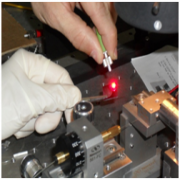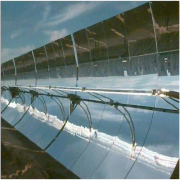Artificial Leaf to Collect Solar Energy from Sun.
Power Plants” Based on Bacteria Could Be Cheaper Than Today’s Solar Energy Technology
Power Plants” Based on Bacteria Could Be Cheaper Than Today’s Solar Energy Technology
“Power Plants” Based on Bacteria Could Be Cheaper Than Today’s Solar Energy Technology
In evolutionary terms, plants and bacteria are the earliest solar energy generators on the planet, refining the process over billions of years. Acknowledging the wisdom of Mother Nature, Tel Aviv University scientists have discovered a way to connect the energy produced by bacteria’s photosynthetic proteins to electrodes, thereby creating a novel form of solar energy –– both abundant and cheap.
On its own, nature creates for us materials that collect the sun's energy, and all we need to do is extract them from the bacteria and use them. These materials do exactly the same thing as silicon-based photovoltaic cells - they collect sunlight and create an electrical charge.
“Power Plants” of the Future
A multidisciplinary research super-team led by Prof. Chanoch Carmeli fromLife Sciences, Dr. Shachar Richter and Dr. Itai Carmeli (the principle inventor) from Exact Sciences and Prof. Yossi Rosenwaks from Electrical Engineering, have put their minds together and developed a way to convert the power produced by the PS I proteins from bacteria into electricity we can use.
The team introduced genetic changes into bacteria so that the proteins they create can bond to a substrate bottom metal and be suited for use. Collecting a single photosynthetic protein from the bacteria, the scientists modified the protein so that they could arrange them in layers in a dry state and place the protein concentrate between two electrodes. The scientists then connected electrical wires to the protein cells, which produce an electrical charge when exposed to light.
The finding of this novelphotovoltaic cell in effect artificial leaves or “power plants” that harness photosynthetic energy was announced at Tel Aviv University’s Renewable Energy and Beyond in May, the largest renewable energy conference to take place in Israel; and where Al Gore was an honoured guest.
This novel solution, which creates artificial leaves using bacteria proteins are a fraction of the cost of the silicon used in solar energy collectors today. Today’s photovoltaic cells made from silicon can convert solar energy to electricity, but due to the extremely high price of silicon, it costs four times more to generate power from solar energy than by using coal or petroleum. This inter-disciplinary project weaves together both mature and young cutting-edge knowledge from engineering, electronics, nano-technology, chemistry and biology. Feasibility studies have been proven and the University’s technology transfer arm Ramot is set to commercialize








